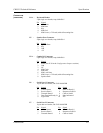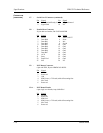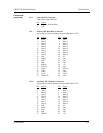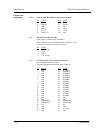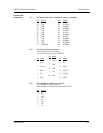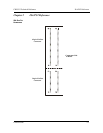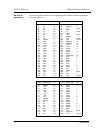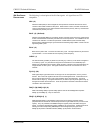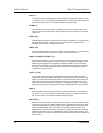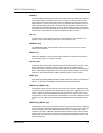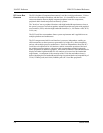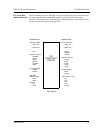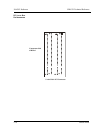
ISA/PCI ReferenceCBI/CGI Technical Reference
Chassis Plans 2-3
ISA BUS SIGNAL
D
ESCRIPTIONS
The following is a description of the ISA Bus signals. All signal lines are TTL-
compatible.
AEN (O)
Address Enable (AEN) is used to degate the microprocessor and other devices from the I/O
channel to allow DMA transfers to take place. When this line is active, the DMA controller has
control of the address bus, the data-bus Read command lines (memory and I/O), and the Write
command lines (memory and I/O).
BALE (O) (Buffered)
Address Latch Enable (BALE) is provided by the bus controller and is used on the system board
to latch valid addresses and memory decodes from the microprocessor. It is available to the I/O
channel as an indicator of a valid microprocessor or DMA address (when used with AEN).
Microprocessor addresses SA[19::0] are latched with the falling edge of BALE. BALE is forced
high during DMA cycles.
BCLK (O)
BCLK is the system clock. The clock has a 50% duty cycle. This signal should only be used for
synchronization. It is not intended for uses requiring a fixed frequency.
CHRDY (I)
I/O Channel Ready (CHRDY) is pulled low (not ready) by a memory or I/O device to lengthen I/
O or memory cycles. Any slow device using this line should drive it low immediately upon
detecting its valid address and a Read or Write command. Machine cycles are extended by an
integral number of clock cycles. This signal should be held low for no more than 2.5 micro-
seconds.
D[15::0] (I/O)
Data signals D[15::0] provide bus bits 15 through 0 for the microprocessor, memory, and I/O
devices. D15 is the most-significant bit and D0 is the least-significant bit. All 8-bit devices on
the I/O channel should use D[7::0] for communications to the microprocessor. The 16-bit
devices will use D[15::0]. To support 8-bit devices, the data on D[15::8] will be gated to D[7::0]
during 8-bit transfers to these devices. 16-bit microprocessor transfers to 8-bit devices will be
converted to two 8-bit transfers.
DAK[7::5]#, DAK[3::0]# (O)
DMA Acknowledge DAK[7::5]# and DAK[3::0]# are used to acknowledge DMA requests
DRQ[7::5] and DRQ[3::0]. They are active low.
DRQ[7::5], DRQ[3::0] (I)
DMA Requests DRQ[7::5] and DRQ[3::0] are asynchronous channel requests used by
peripheral devices and the I/O channel microprocessors to gain DMA service (or control of the
system). They are prioritized, with DRQ0 having the highest priority and DRQ7 having the
lowest. A request is generated by bringing a DRQ line to an active level. A DRQ line must be
held high until the corresponding DMA Request Acknowledge (DAK) line goes active.
DRQ[3::0] will perform 8-bit DMA transfers; DRQ[7::5] will perform 16-bit transfers.



